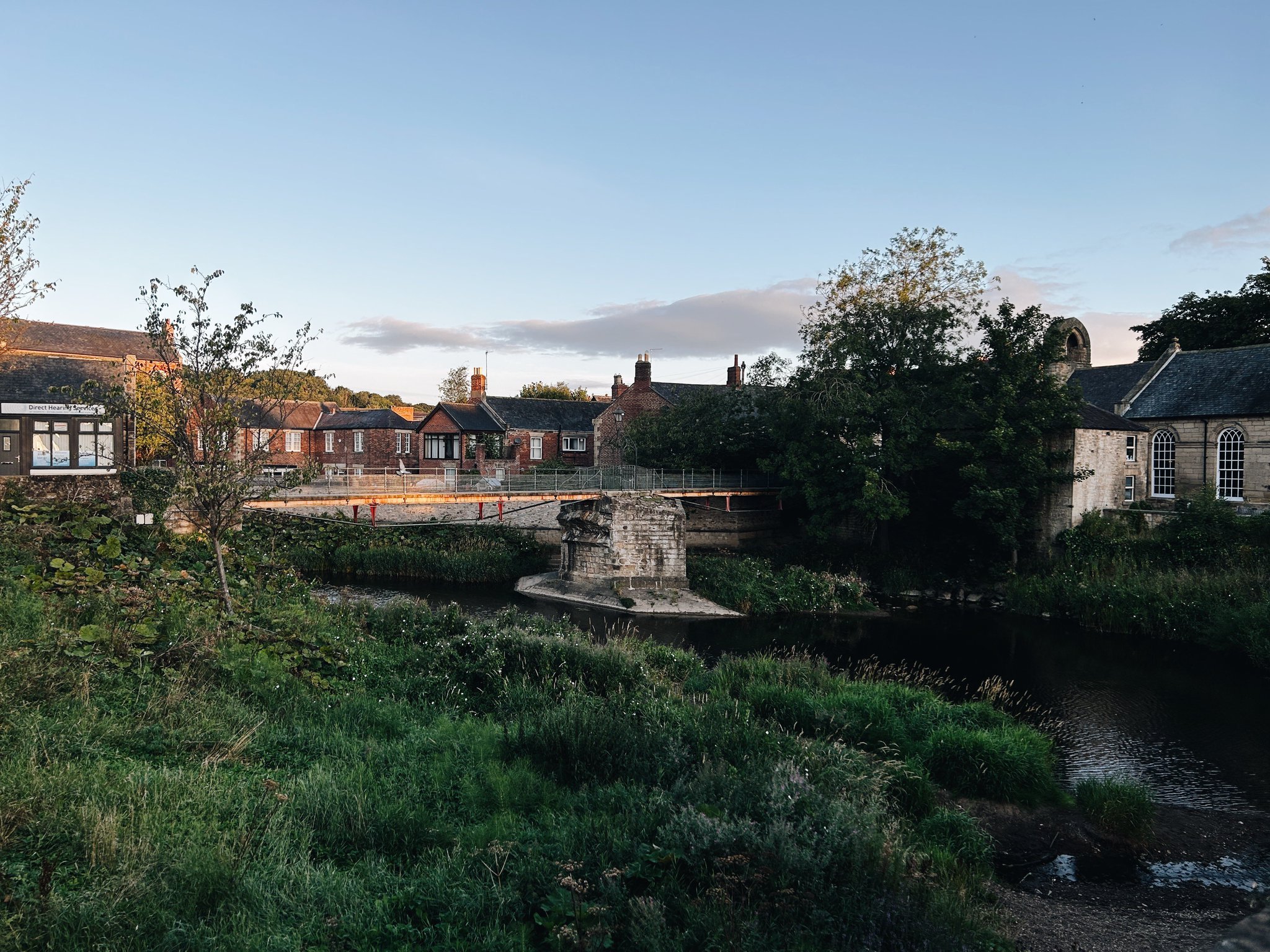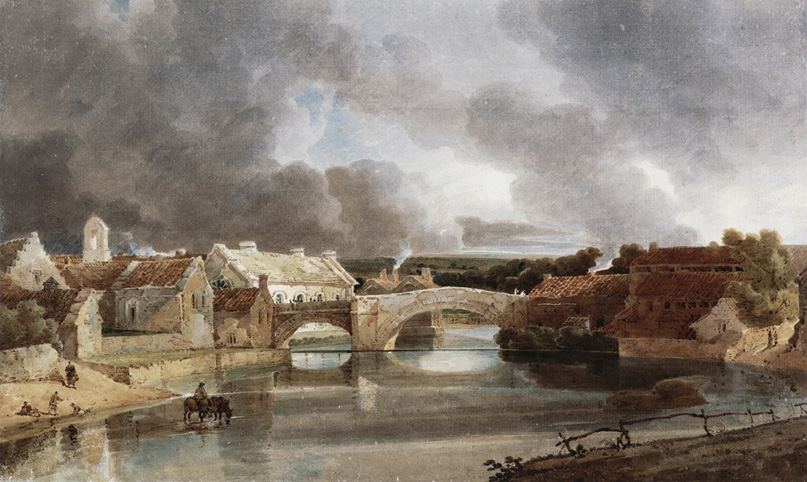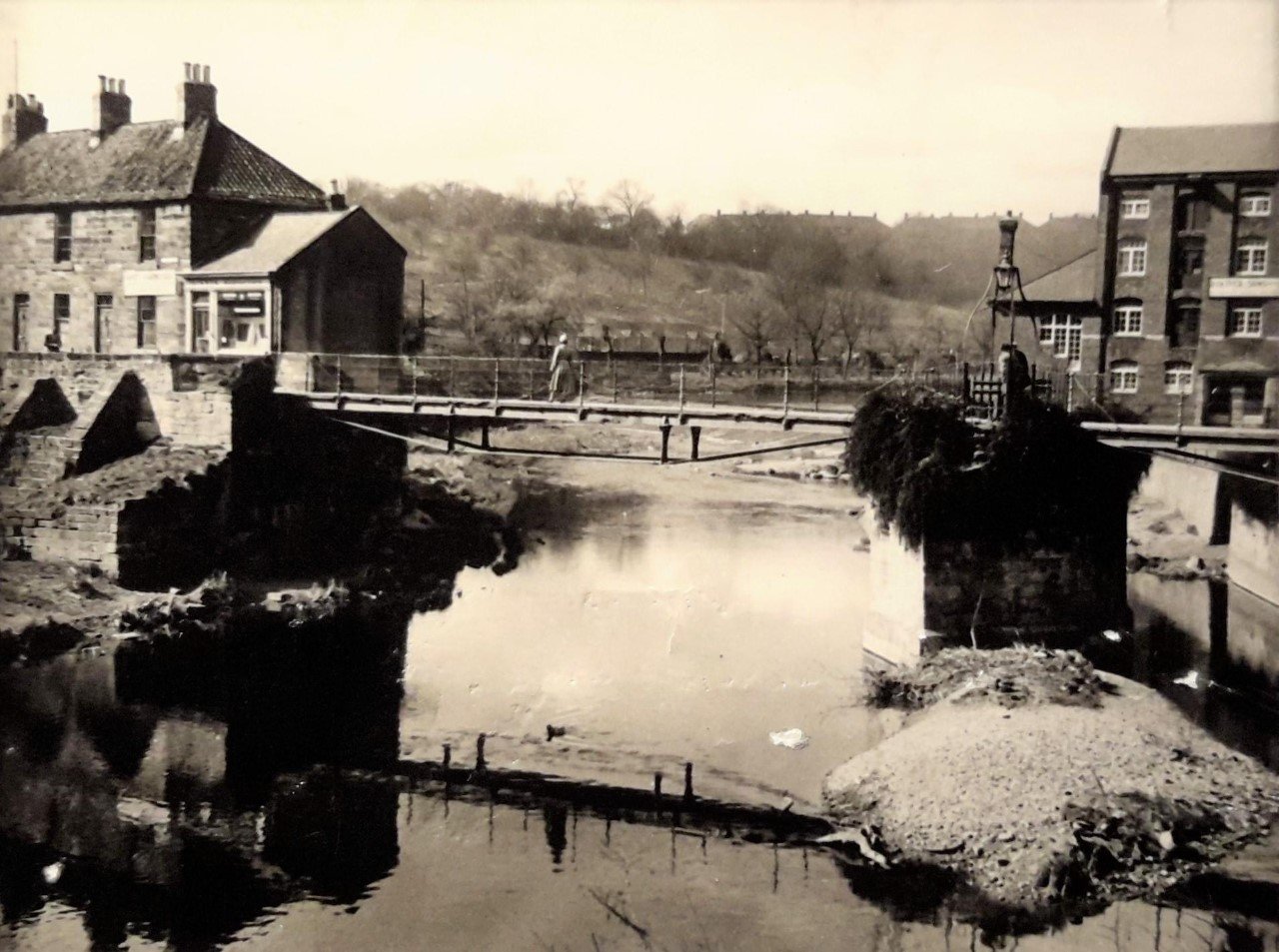
Morpeth
Morpeth Old Bridge
Last Updated:
8 Oct 2024
Morpeth
This is a
Bridge
55.166569, -1.687132
Founded in
Current status is
Partly Preserved
Designer (if known):

In use as piers for the iron footbridge
On the centre of my shot, you'll see the central pier and abutments of Morpeth's medieval bridge over the Wansbeck. They form the support for the 19th century iron footbridge.
A footbridge was first authorised here in the 13th century, as the burgesses of the town sought to make it easy as possible for wagons and goods to cross over the river which was probably wider back then. It was strategically critical too given Morpeth Castle was very close by. It will have also been a source of revenue, collecting tolls to maintain it and the town itself. It's worth saying this stone may not be the original crossing, but the 2nd. A timber structure and piles were found beneath the pier, indicating the probably first wooden crossing.
It was still in use in the 1820s, and we can see it with its central pier on Woods' plan below from 1826. It's also finely illustrated in Girtin's painting from 1802, and gives you a good impression of its scale and twin arches with the chantry and the All Saints Chapel next door. By 1832 it was closed up and rendered "impassible" for all but foot passengers when the new toll bridge opened we discussed yesterday. The two segmental arches were removed in 1835.
What we see today is the sandstone remains, propping up an iron walkway erected in 1869 through public subscription - some 40 years after the last one. The more modern iteration was built by the Swinney Bros after a motion was approved by the council. Notably Charles S Swan, the shipbuilder, was the man who proposed the vote as he was a councillor at the time.
Listing Description (if available)


Both maps above depict Morpeth from the 1820s through to the 1850s. Though Woods' plan of 1826 is a little tricky to analyse, it still proves a vital instrument for research at this particular time period. We see the old bridge as it was before removal, and perfectly highlights the bottleneck that it would have caused for folk travelling to market days and further north. The old burgage plots were perfectly intact on both sides of Bridge Street as well as up Newgate Street.
The 1859 Ordnance Survey plan gives us a better idea of the site, despite the new bridge being opened. Morpeth is very much as it was 160 years ago with the chantry and chapel still remaining. Many pubs like the Black Bull are still operating, and the weir over the Wansbeck remains too.

Again, there is very minor change between the 1850s and 90s. In fact, the only real substantial alteration is the closure of Morpeth Gaol just beyond the clipping, but it was retained as a court house and police station after the prisoners were shuttled off to Carliol Gaol in Newcastle. David's Well is also a prominent feature, and was the source of "excellent spring water, deriving its name from the person who first opened it" according to the excellent namebooks.org.uk.

The central pier of the old bridge in August 2024

Morpeth Bridge by Thomas Girtin, 1802. Watercolour, ink, pencil on paper, 52.9 cm x 32.1 cm, Laing Art Gallery

The old bridge remains and iron construction around the 40s or 50s (?). Original source unknown
